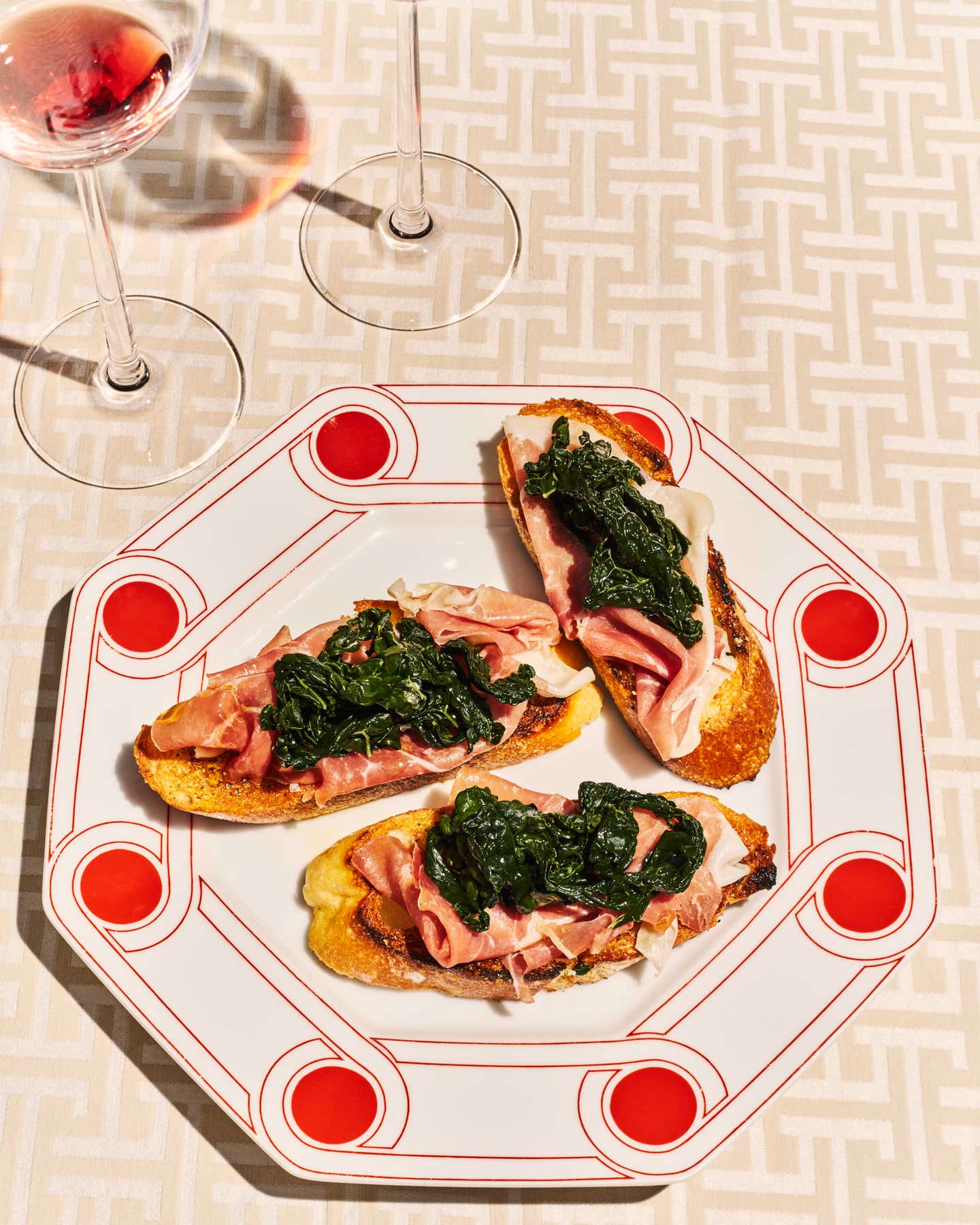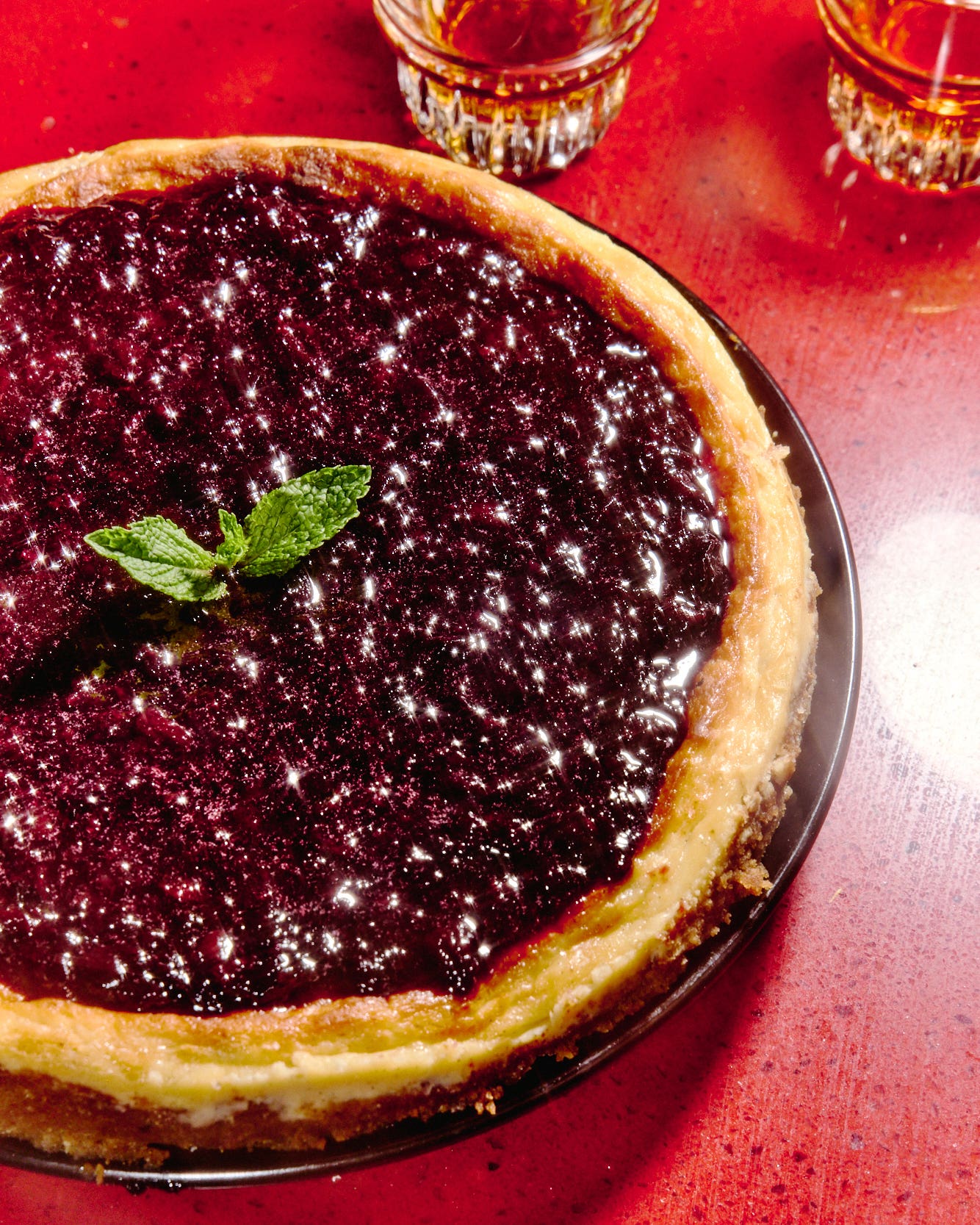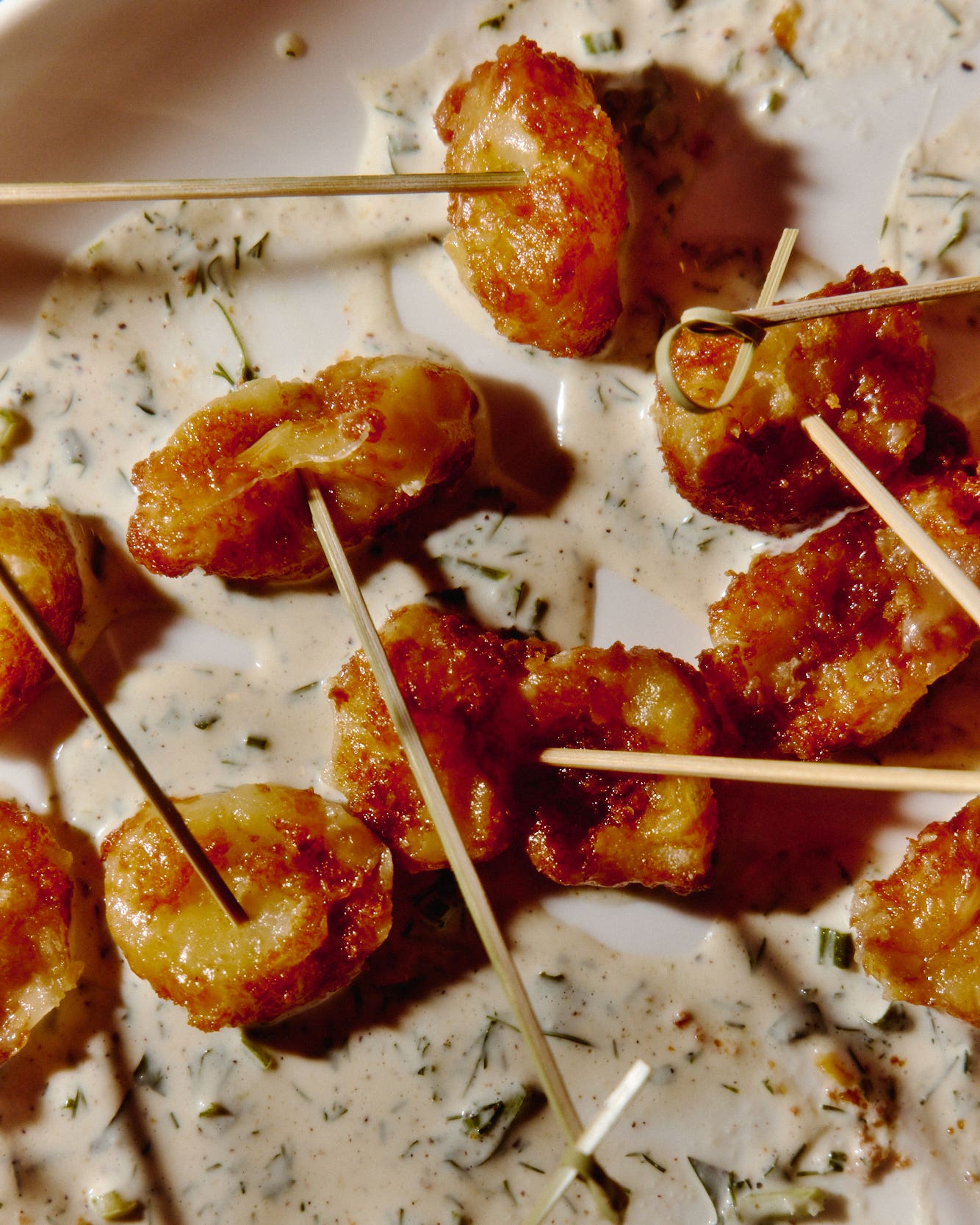
In recent years, I've tasted more riffs on gravlax—Scandinavian-style salt-and-sugar-cured salmon—than I can count. There was the gravlax made with honey, the gravlax scented with orange, lemon, and grapefruit zest, the gravlax spiced with cumin, and, at a Swedish friend's home, no less, the gravlax served with a sauce made from coffee. But it was the tequila-and-lime-spiked version, which tasted exactly like a margarita, that finally gave me pause.
Granted, most of those interpretations were pretty tasty; some were downright delicious. But there's an easy, understated beauty to the traditional recipe, which calls for nothing more than salt, sugar, fresh dill, and a salmon filet, that brings into focus both the miraculous nature of the dish and the rich essence of the fish itself. The first time I made gravlax at home I was shocked by how simple the process was. I rubbed the raw salmon all over with the curing ingredients, wrapped it in plastic, and left it in the refrigerator, and after just a few days it had transformed into a satiny, meltingly tender delicacy. The gravlax, sliced into thin, translucent slivers, has such a concentrated flavor that it needs little embellishment and is best served simply, atop knackebrod (a Swedish flatbread) with a garnish of chopped red onion and dill, or with a mustard-dill sauce known as Gravlaxsas, the more traditional accompaniment.
Gravlax is rooted in a traditional Scandinavian technique for preserving fish; the name comes from the Swedish words gravad (buried) and lax (salmon). The first versions of it were probably made in Sweden or Norway sometime in the 14th century, when fisherman found that burying fresh-caught fish in the cold ground, usually along with pine needles (possibly a precursor to the modern recipe's dill), caused fermentation and preserved the fish for as long as a year. This early method had its drawbacks. "Burying produces a very smelly fish," writes Mark Kurlansky in his 2002 book Salt: A World History (Walker & Company). "The Swedes have maintained the popularity of gravlax by replacing it with salmon cured with salt and sugar."
Once people discovered that the salting of raw fish could accomplish in days what burying it achieved over many months, minus the funk, the salt-cured versions of gravlax caught on, aided by the advent of the icebox and, later, the refrigerator. By the 19th century, gravlax as we know it had become a staple on smorgasbord spreads. Scandinavian immigrants brought the recipe with them to the United States when they immigrated in the late 1800s, and in the 1920s many set up shop as fish processors in the Pacific Northwest to make gravlax commercially. The dish's popularity spread in the 1950s, driven by a widespread American interest in smorgasbord, and the cured fish became a common feature in Jewish appetizer stores, alongside the many other varieties of cured and cold-smoked salmon (including lox, nova, and gaspe) that derive from other ethnic traditions.
You can easily buy gravlax, but there's something so gratifying about making your own. Before you get started, it helps to understand the basic chemistry behind the cure. The salt draws moisture and water-soluble proteins out of the cells of the fish, allowing the flavors of the other ingredients to penetrate the flesh more readily; the salt also restores proteins in the flesh, causing it to firm up. And, most crucial, salt preserves the fish and prevents spoilage. You have to hand it to those early Scandinavian innovators who understood the principles of preservation long before science explained it. "Today we know and can measure the exact values of these [chemical] relationships," wrote the Norwegian historian Astri Riddervold in a paper about "gravlaks" (as the dish is called in Norway) for the Oxford Symposium on Food and Cooking in 1985. "The practical experiences, however, are hundreds, even thousands of years old, carefully handed down from one generation to the next."
Of course, variations in traditional gravlax recipes have developed over time. Some, for example, call for placing a heavy object on top of the fish while it cures. I've made versions that were weighted and versions that were not, and I've found that the weighted fish seemed to cure faster and ended up with a slightly firmer texture and a more evenly distributed flavor. Barbara Rasco, a professor of food science at Washington State University who has worked with the seafood industry for 30 years, explained to me that the weight compresses the fish's cells and facilitates salt penetration and water extraction.
Other recipes suggest the addition of alcohol, usually aquavit, the clear Swedish spirit distilled from grains or potatoes. After making gravlax both with aquavit and without, I found that the alcohol seemed to concentrate the flavor of the fish, the dill, and the other seasonings. "That's because the flavor components in the dish are alcohol soluble," Rasco explained, meaning that alcohol unlocks the flavor compounds in the herbs and spices and helps them permeate the fish's flesh. Alcohol also releases the ample flavor stored in the salmon's fat cells, Rasco told me; sure enough, I found that gravlax made with fattier varieties—like farm-raised Atlantic salmon—had a more intense overall flavor than did leaner varieties such as coho, a wild Pacific salmon, which had not only a milder taste after curing but also a less silky texture.
Even with traditional Scandinavian recipes, there's no end to the variations. Some I have come across call for rubbing the flesh with caraway and juniper or white peppercorns and coriander seeds; others advise adding fennel fronds or other herbs to complement the dill. The more I researched and the more versions I tried, the more I became convinced that the urge to experiment with gravlax is as natural as the evolution of gravlax itself. Recently, I've allowed myself to freestyle a bit: not long ago, I tried a preparation that included orange zest; another time, I added Pernod. With each new iteration, I marveled at how the different cures took the dish in wildly divergent directions. Still, such liberalism should have its limits. Take it from me: stop yourself before you get to the tequila.
Keep Reading
Continue to Next Story










